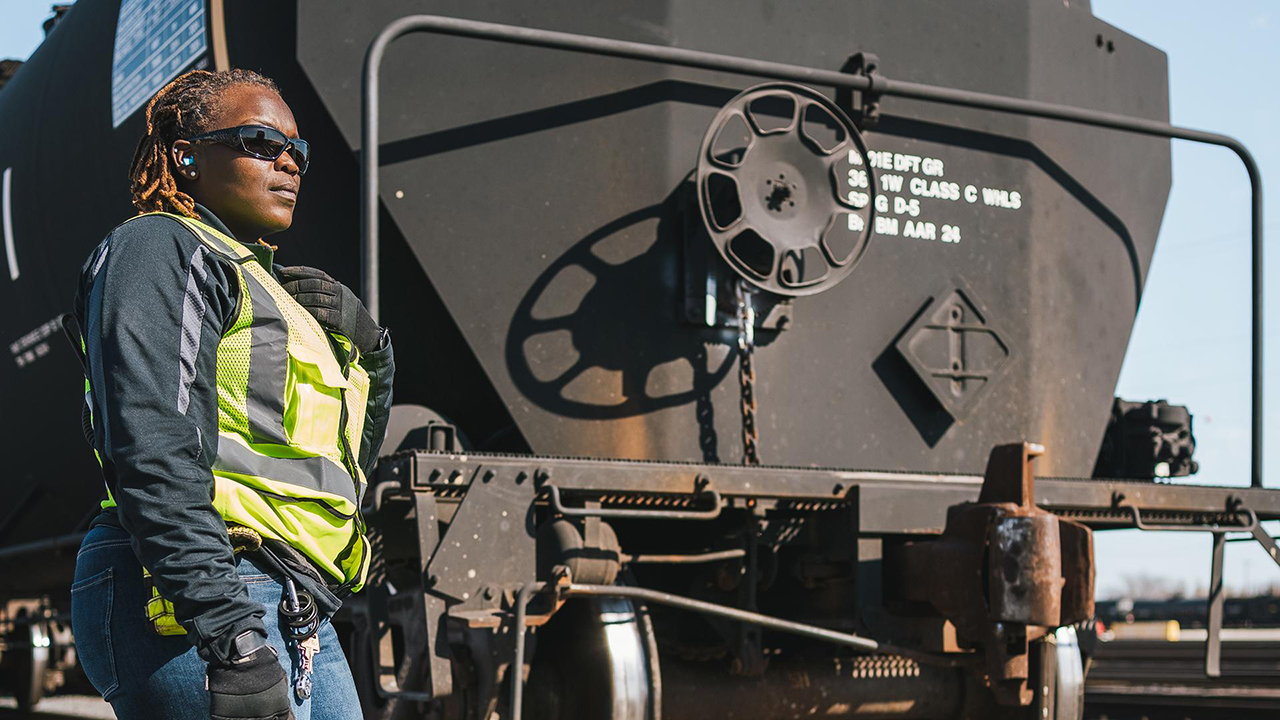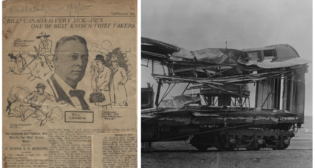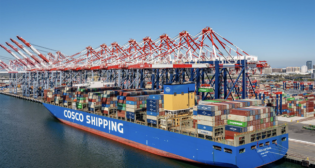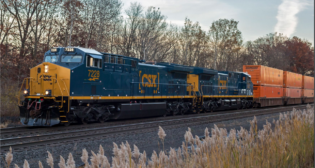
FRA Questions UP on Rolling Stock Safety Compliance (Updated)
Written by William C. Vantuono, Editor-in-Chief
Union Pacific Car Inspector Davida Flowers. UP photo.
Federal Railroad Administrator Amit Bose on Sept. 8 sent a letter to Union Pacific “to express serious concern about specific and significant risk to rail safety.” “Compliance of the rolling stock (freight cars and locomotives) on the UP network is poor, and UP was unwilling or unable to take steps to improve the condition of [its] equipment,” Bose said in the letter (downloadable below), addressed to CEO Jim Vena, President Beth Whited and Executive Vice President-Operations Eric J. Gehringer—and copied to Surface Transportation Board Chair Marty Oberman and six union officials. Vena has responded with a polite but firm letter to Bose some observers are calling “Railroading 101.”
Bose cited a “focused inspection of the UP mechanical operations and rolling stock” that occurred in July and August. These inspections, he said, determined that the “defect ratio of freight cars was 19.93% and 72.69% for locomotives,” adding that those percentages “are both twice the national average.” He accused UP of “not taking steps to improve the condition of [its] rolling stock as the defect ratio did not improve over time.”
Bose also implied recent furloughs were largely to blame. “UP recently furloughed 94 locomotive craft employees and 44 carmen across the system based on UP’s claims of receding volumes and lack of demand for service,” he said. “This begs the question: Was UP’s failure to act to improve the condition of [its] rolling stock … a result of not having the personnel to make the necessary repairs because of the recent furloughs?”
“Union Pacific will never compromise on the safety of our employees,” UP spokesperson Kristen South told the Associated Press. “Safety is always our first priority, and we are reviewing and will address the concerns raised by the FRA,” she said, adding that the railroad’s staffing levels provide “a buffer to allow for the natural ebb-and-flow nature of our business.”
Vena Responds
Following a phone conversation with Bose, newly installed UP CEO Jim Vena—a veteran operating officer—wrote to him (download below) expressing a willingness to cooperate and that more information is forthcoming, but tactfully explaining a few of the railroad’s detailed operating procedures and protocols, as well as some of the technical nuances of diesel-electric locomotives, of which for both Bose’s understanding is likely limited, given his lack of any practical railroading experience. Vena also gently reminded Bose that the FRA itself has not completed its own audit process.
”When unscheduled audits occur in rail yards, it is standard procedure to work with FRA inspectors to ensure the location of the inspections doesn’t cause safety risks for inspectors or employees, or create service interruptions for our customers,” Vena said. “We are proud of the professional relationships our managers have with local federal inspectors, and it is very common at a location like North Platte to ask the inspection team to go to a different part of the yard if inspections are becoming impactful to service or placing the inspectors at risk. In this instance, North Platte has four yards where inspections can occur, and the FRA inspection team was respectfully asked to move to a different location. When crews run unscheduled inspections in one direction, it is also common for them to need a return route. The concerns expressed by management regarding the need to deadhead crews (ones with no planned return trip back) are also typical.”
“More than 1,000 items can be considered a defect on a locomotive, ranging from something minor that has less impact on the mechanical safety of a locomotive, such as an amnesty lock on a bathroom door, to higher impact ones like a high flange wheel,” Vena noted. “We are eager to understand the types and categories of the defects cited, as well as the ratio of the percentage of defects. The recent FRA investigation involved 10% of the overall Union Pacific fleet maintained on Sept. 1, which is important context as we dive deeper into the findings and work on actions to address them.”
“Typically, inspections by the FRA include a focused audit close out with clear findings and action steps, as well as a meeting to discuss any findings and mitigation approaches,” Vena added. “Our team has not received an audit closeout, which will help us more quickly address the issues raised … As we await the standard audit closeout documentation, our teams are already working to identify any potential gaps in our daily repair process. We plan to review those findings, as well as actions we’re taking to close any identified gaps, during our October meeting.”
Commentary
“How did these mechanical car and locomotive defect percentages get so large?” asked Railway Age Contributing Editor Jim Blaze. “Would this have happened that quickly on Jim Vena’s new watch? And for that matter, how could periodic sampling by FRA let this all of a sudden become such a large failure rate? Ever see this pattern before?
“I’ve seen this pattern before,” commented Railway Age contributor Roy Blanchard. “It can occur when the unionized mechanical forces start talking to their FRA inspector friends about how bad things are. All of a sudden, the FRA inspectors descend in great numbers and find defects on everything. We all know that you can climb on any piece of equipment and find a defect to write up, even something so small as a bent grab iron. This is more a political stunt than any indication of Union Pacific falling down on safety.”
“Note that Bose copied all the union officers with safety responsibilities, but he made no public announcement,” commented Railway Age Capitol Hill Contributing Editor Frank N. Wilner. “Bose has been at labor’s beck and call since his Senate confirmation. He is seeking something higher in a second Biden Administration if one comes to pass. There is not one opportunity to speak at labor gatherings that Bose hasn’t taken advantage of.”
Former FRA Deputy Administrator for Safety Grady Cothen disagrees. “This is not unheard of, but very bad,” he said. “Putting this together with other fragments, I think mechanical forces have been cut back too much. Many cycle trains are never seeing a car inspector. Locomotives are being overutilized. I have seen recent claims that InteRRIS® (Integrated Railway Remote Information Service) flags are being ignored. A colleague says inspections of trains that had a minor derailment revealed multiple defects. FRA jumped on UP where they should be at their best and made them scream uncle. UP was used to being able to make the MP&E (motive power and equipment) inspectors stand down. Four years-plus of FRA backing off seems to have finally ended. It’s about time. However, there are two other points to remember. First, most FRA defects are not written as violations, unless the defect is moved outbound. So, fix it, if you have retained the capacity to do so. Second, for every FRA defect on a car, there are usually more than one AAR defects. FRA cannot enforce those. You can tell as a regulator how good compliance is. It was usually pretty good at the time I retired in 2010, notwithstanding, as Roy Blanchard said, there are always some defects out there. Clearly, we have a problem, Omaha.”
Railway Age Contributing Editor Mike Iden, a former UP locomotive official, offered this observation: “Little things can go big. Regulations unfortunately are usually go/no go, +/- zero tolerance. Would a handrail-to-carbody clearance of 2-7/16 inches (2-1/2 is the regulation minimum) cause an injury? Likely not. But that’s why I always advise doing 2-3/4 inches clearance on new units, to allow room for the inevitable accidental dents, dings and bends. Regulations, of course, are law. Hence my view about adding some margin to regulatory dimensionswere feasible. I would never ‘go above,’ for example, the maximum allowable pilot height of 6 inches above top of rail.”



